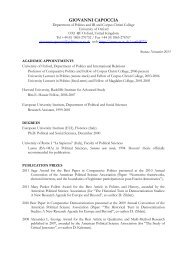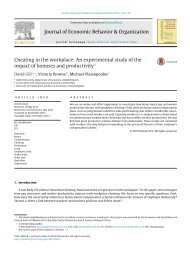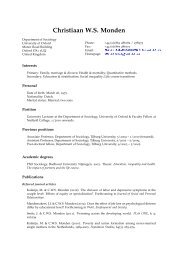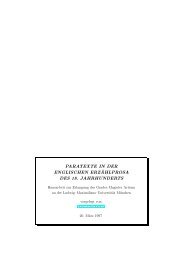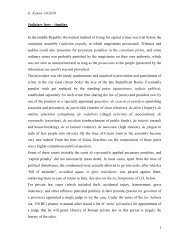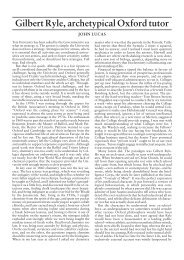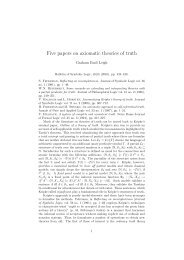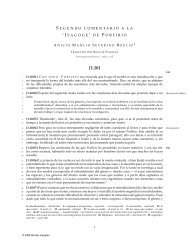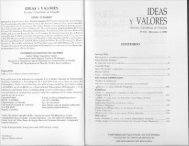Lexical Functional Grammar - Personal Pages Index
Lexical Functional Grammar - Personal Pages Index
Lexical Functional Grammar - Personal Pages Index
Create successful ePaper yourself
Turn your PDF publications into a flip-book with our unique Google optimized e-Paper software.
The deduction is performed on the basis of logical premises contributed by<br />
the words in the sentence (and possibly by syntactic constructions). Linear<br />
logic, a resource-based logic, is used to state requirements on how the meanings<br />
of the parts of a sentence can be combined to form the meaning of the sentence<br />
as a whole. Linear logic is different from classical logic in that it does not<br />
admit rules that allow for premises to be discarded or used more than once in a<br />
deduction. Premises in a linear logic deduction are, then, resources that must<br />
be accounted for in the course of a deduction; this nicely models the semantic<br />
contribution of the words in a sentence, which must contribute exactly once to<br />
the meaning of the sentence, and may not be ignored or used more than once.<br />
A sentence like David knocked twice cannot mean simply David knocked: the<br />
meaning of twice cannot be ignored. It also cannot mean the same thing as<br />
David knocked twice twice; the meaning of a word in a sentence cannot be used<br />
multiple times in forming the meaning of the sentence.<br />
The syntactic structures for the sentence David yawned, together with the<br />
desired semantic result, are displayed in (47):<br />
(47) David yawned.<br />
IP<br />
NP I ′<br />
N VP<br />
David V<br />
yawned<br />
φ<br />
⎡<br />
⎤<br />
PRED ‘YAWN〈SUBJ〉’<br />
⎣<br />
SUBJ [ PRED ‘DAVID’ ] ⎦ yawn(David) : [ ]<br />
σ<br />
The semantic structure for the sentence is related to its f-structure by the correspondence<br />
function σ, represented as a dotted line. This result is obtained on<br />
the basis of the following lexical information, associated with the verb yawned:<br />
(48) λX.yawn(X) : (↑ SUBJ) σ −◦ ↑ σ<br />
This formula is called a meaning constructor. It pairs the meaning for<br />
yawned, the one-place predicate λX.yawn(X), with the linear logic formula<br />
(↑ SUBJ) σ −◦ ↑ σ . In this formula, the connective −◦ is the linear implication<br />
symbol of linear logic. This symbol expresses a meaning similar to if...then...:<br />
in this case, stating that if a semantic resource (↑ SUBJ) σ representing the<br />
meaning of the subject is available, then a semantic resource ↑ σ representing<br />
the meaning of the sentence can be produced. Unlike the implication operator<br />
of classical logic, the linear implication operator −◦ carries with it a requirement<br />
for consumption and production of semantic resources: the formula<br />
(↑ SUBJ) σ −◦ ↑ σ indicates that if a semantic resource (↑ SUBJ) σ is found, it is<br />
consumed and the semantic resource ↑ σ is produced.<br />
We also assume that a name like David contributes a semantic resource, its<br />
semantic structure. In an example like David yawned, this resource is consumed<br />
by theverb yawned, which requires aresourcefor its SUBJ to producea resource<br />
for the sentence. This accords with the intuition that the verb in a sentence<br />
20



